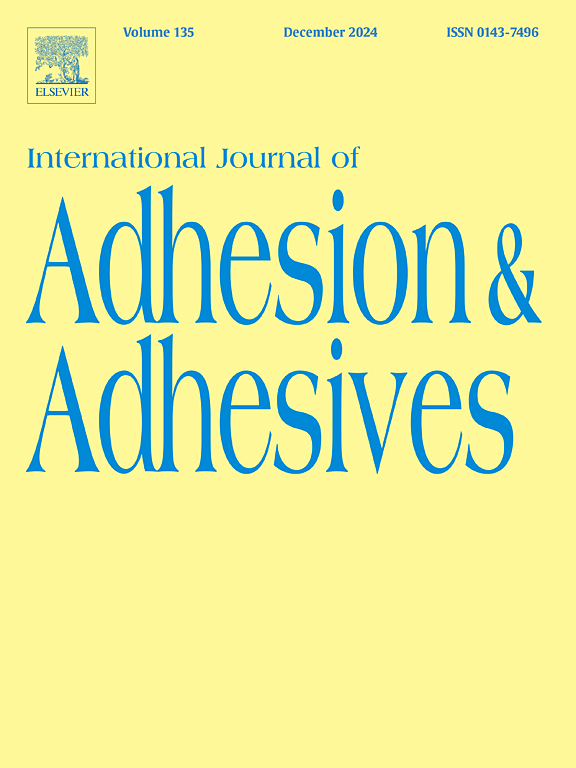在稳态和瞬态温度条件下胶合木材中胶合钢棒的热力学行为
IF 3.5
3区 材料科学
Q2 ENGINEERING, CHEMICAL
International Journal of Adhesion and Adhesives
Pub Date : 2025-09-18
DOI:10.1016/j.ijadhadh.2025.104161
引用次数: 0
摘要
粘接杆连接在机械载荷下的强度在文献中得到了广泛的研究。然而,相对较少的研究检查了它们在机械和热载荷联合作用下的性能,这是令人担忧的,因为在这些连接类型中使用的粘合剂的玻璃化转变温度低(~ 40-80°C)。本文讨论了一系列粘接杆在热力载荷下的试验结果,包括稳态和瞬态温度试验。研究了埋入长度、环氧树脂类别(一种环氧树脂用于环境条件,另一种环氧树脂用于高温应用)、环氧树脂固化方法和木材封装对失效时棒的最高温度和失效时间的影响。此外,还研究了冷却后连接的剩余强度。研究结果表明,嵌固长度是影响粘接杆热工性能的最主要因素,将嵌固长度延长至超出粘接杆生产要求的范围,可以进一步提高粘接杆热工性能。结果还表明,通过特定的固化方案或使用专门的高温粘合剂实现更高的玻璃化转变温度,可将失效时棒的最高温度从60°C提高到120°C。与对照组相比,发现使用封装可使故障时间增加1.3倍。本文章由计算机程序翻译,如有差异,请以英文原文为准。
Thermomechanical behaviour of glued-in steel rods in glulam timber under steady-state and transient temperature conditions
The strength of glued-in rod connections under mechanical loading has been extensively studied in the literature. However, there have been comparatively few studies examining their performance under combined mechanical and thermal loading, something that is of concern because of the low glass transition temperature (∼40–80 °C) of adhesives used in these connection types. This paper discusses experimental results from a series of glued-in rod connections tested under thermomechanical loading, including both steady-state and transient temperature tests. The influence of embedment length, epoxy class (one epoxy intended for use in ambient conditions, and one epoxy intended for high temperature applications), epoxy curing method, and encapsulation of the timber on the maximum rod temperature at failure and the failure time were investigated. Furthermore, the residual strength of the connections after cooling was also investigated. Results of the study demonstrate that embedment length is the most influential factor on the thermomechanical performance of glued-in rod connection and that extending the embedment length beyond what is required to yield the rod can result in further improvements in thermomechanical performance. Results also showed that use of a higher glass transition temperature, achieved through specific curing protocols or using specialized high-temperature adhesives increased the maximum rod temperature at failure from 60 °C to 120 °C. The use of encapsulation was found to increase the failure time by up to 1.3 times when compared to the control.
求助全文
通过发布文献求助,成功后即可免费获取论文全文。
去求助
来源期刊

International Journal of Adhesion and Adhesives
工程技术-材料科学:综合
CiteScore
6.90
自引率
8.80%
发文量
200
审稿时长
8.3 months
期刊介绍:
The International Journal of Adhesion and Adhesives draws together the many aspects of the science and technology of adhesive materials, from fundamental research and development work to industrial applications. Subject areas covered include: interfacial interactions, surface chemistry, methods of testing, accumulation of test data on physical and mechanical properties, environmental effects, new adhesive materials, sealants, design of bonded joints, and manufacturing technology.
 求助内容:
求助内容: 应助结果提醒方式:
应助结果提醒方式:


